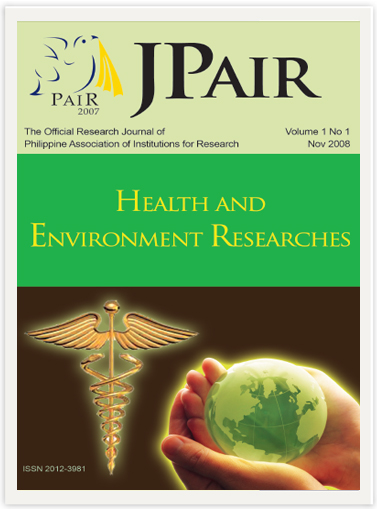The Plight of Children With Disabilities In Selected Areas In Bohol Province: A Proposed Integrated Rehabilitation Program
DOI:
https://doi.org/10.7719/jpair.v1i1.38Keywords:
children, disabilities, rehabilitationAbstract
The essence of childhood is growing into a well-functioning adult, but children with disabilities often face challenges that hinder this process, leading to limitations as adults. In the Philippines, approximately 6.5 million individuals live with disabilities, with 75% residing in rural or semi-urban areas where rehabilitation services are scarce or unavailable (NCSO, 2000). This issue is particularly pronounced in Bohol Province, where access to information about children with disabilities (CWD) is limited due to a lack of comprehensive data. In response, the University of Bohol College of Allied Medical Sciences (UBCAMS) conducted a study to assess the status of CWD and their families in Tagbilaran City and three municipalities. The study aimed to evaluate the extent of disabilities among children and propose an Integrated Rehabilitation Program. By doing so, it seeks to raise awareness among civil society, local government units, and relevant agencies to address the needs of CWD and provide adequate support. This initiative is crucial for ensuring that children with disabilities receive the necessary care and resources for their development. Ultimately, the study will enable UBCAMS to expand its community-based rehabilitation services, promoting inclusive development and improving access to rehabilitation services in Bohol. This coordinated effort is essential for enhancing the quality of life for CWD and their families, aligning with broader societal goals of fostering well-being and equality.
Downloads
References
Downie, P. A. (Ed.). (1986). Cash’s Textbook of Neurology for Physiotherapists. C&E Publishing Co.
Downloads
Published
Issue
Section
License
Copyright (c) 2008 Gloria T. Casabal, Jeimylo C. de Castro

This work is licensed under a Creative Commons Attribution-NonCommercial 4.0 International License.
Open Access. This article published by JPAIR Multidisciplinary Research is licensed under a Creative Commons Attribution-Noncommercial 4.0 International (CC BY-NC 4.0). You are free to share (copy and redistribute the material in any medium or format) and adapt (remix, transform, and build upon the material). Under the following terms, you must give appropriate credit, provide a link to the license, and indicate if changes were made. You may do so in any reasonable manner, but not in any way that suggests the licensor endorses you or your use. You may not use the material for commercial purposes.




















